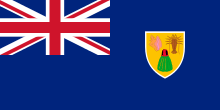TURKS & CAICOS ISLANDS
 The Turks and Caicos Islands consist of about 40 islands and islets, namely 1 113 sq km of land but only eight islands were inhabited. This archipelago is situated south of the Bahamas and north of Hispaniola. The Turks islands are composed of Grand Turk, Salt Cay and several small islands. Grand Turk is 11km long and 2,5km wide. A channel separates the Turks Islands from the Caicos Islands which are made up of West Caicos, Middle Caicos, North Caicos, East Caicos, South Caicos and Providenciales, nicknamed “Provo”. This is the main tourist island.
The Turks and Caicos Islands consist of about 40 islands and islets, namely 1 113 sq km of land but only eight islands were inhabited. This archipelago is situated south of the Bahamas and north of Hispaniola. The Turks islands are composed of Grand Turk, Salt Cay and several small islands. Grand Turk is 11km long and 2,5km wide. A channel separates the Turks Islands from the Caicos Islands which are made up of West Caicos, Middle Caicos, North Caicos, East Caicos, South Caicos and Providenciales, nicknamed “Provo”. This is the main tourist island.
The relief is very flat. Some islands are very dry – in particular Grand Turk, Salt Cay and South Caicos – and do not have vegetation. The largest islands, North Caicos, Middle Caicos and East Caicos, are green with creeks, lagoons and marsches. Most of the sandy beaches are located on the north and the west shores.
The wildlife is comprised of wild horses, donkeys, cattle, iguanas, turtles etc.
More than 175 species of bird have been counted : flamingos, herons, frigates, hawks, owls, ospreys… Dolphins and rays are numerous in the sea.
The nature is protected by the creation of the Columbus Landfall National Park, the South Creek National Park, the Princess Alexandra National Park and the West Caicos Marine National Park.
In the economic field, the Turks and Caicos Islands relied on the exportation of salt until the 1950s. Now, their main activities are tourism especially since Club Méditerranée has been set up on Providenciales island in the 1980s, banking and fishing but Great Britain give a financial aid to the archipelago.
The first inhabitants of the Turks and Caïcos Islands were the Taïno Indians and Lucayan Indians known as sailors, salt collectors and farmers. The name of this archipelago comes from the Amerindians’ language : “Turks” is a reference to a native cactus and “Caicos” comes from the lucayan word “caya hico” meaning “string of islands”. These Amerindians lived in peace during almost 700 years especially in Middle Caïcos and Grand Turk.
Moreover, it was on this island where landed Christopher Columbus, on October 12, 1492, according some historians ; others say it was Juan Ponce de León, the Spanish explorer, who discovered the archipelago in 1512. What it’s true, shortly after the Spanish colonization, this population was decimated by ill-treatment and diseases. During around thirty years, these islands was not very populated until the arrival of the Bermudian traders, in 1678, who came to collect salt in the numerous ponds. More than 1000 boats sank straight to the bottom during these trips.
At the early of the 18th century (1706), the Turks and Caicos Islands were the subject of a war between French, English and Spanish then they became pirates’ dens and a refuge for the British colonists who fled the American Revolution. In the end, these islands returned to England by the Treaty of Versailles which placed them, in 1766, under the authority of the Bahamas. In 1874, the “Big Cyclone of the Bahamas” destroyed several islands in the region and the Turks and Caicos Islands were incorporated into Jamaica. After the independence of this big colony in 1962, the archipelago was again run directly by London. In 1973, it became an autonomous British territory.
Today, Cockburn Town, the ex main colony, is the administrative and political capital for more than 400 years.
Area : 1 113 sq km (430 sq miles)
Population : 51 500 inhabitants
Capital : Cockburn Town (Grand Turk island)
Language : English
Currency: US Dollar (US$)
People : Turks and Caicos Islanders
